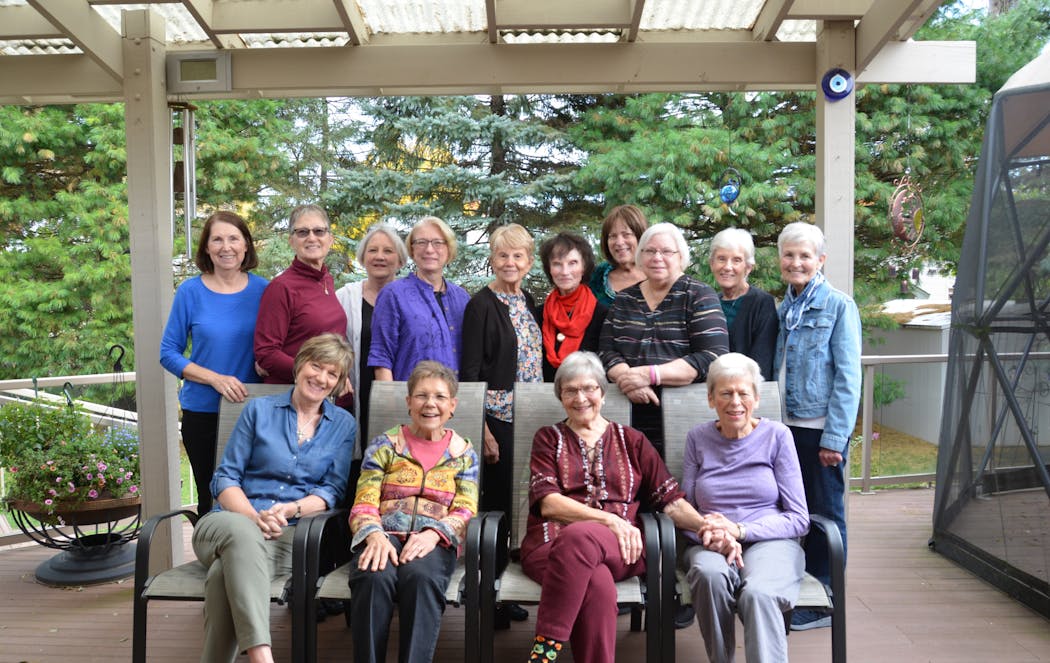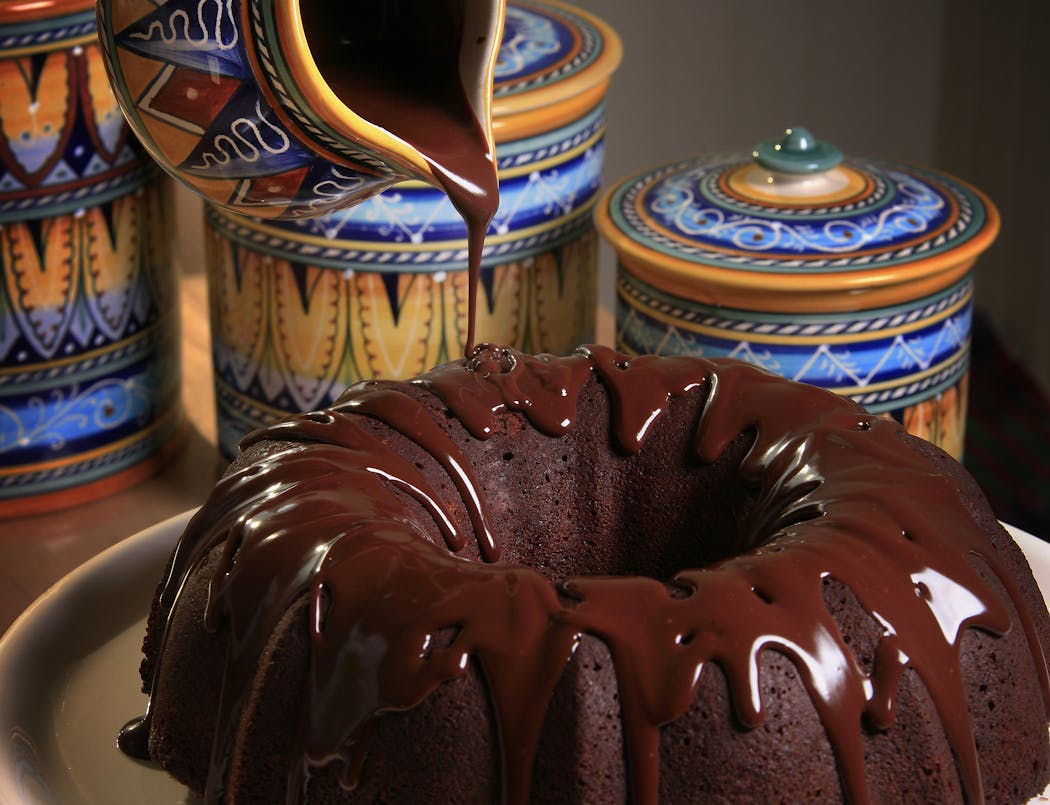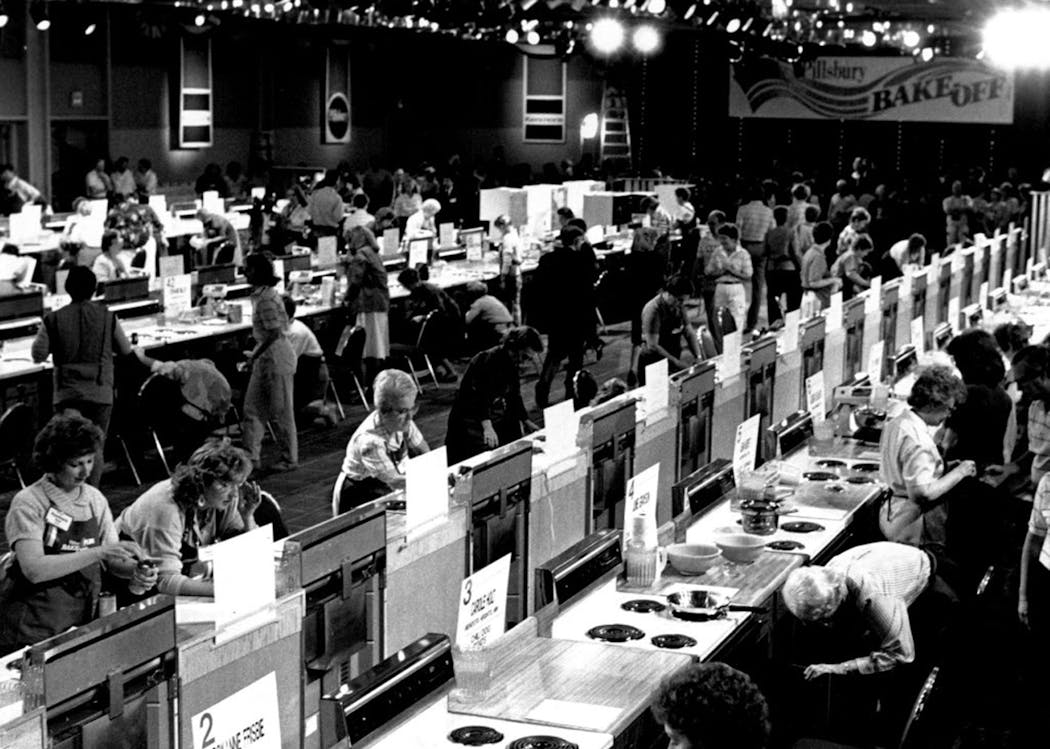Not surprisingly, the freshly baked Tunnel of Fudge Cake was still the star of a recent Pillsbury Bake-Off gathering. It is, after all, the most popular recipe in the history of the contest.
On this occasion, one of twice-yearly gatherings, the women behind the contest, all former Pillsbury employees, now retired, who had supported the Bake-Off in the test kitchen, promotions, cookbooks, marketing and public relations, had gathered at the home of Elaine Christiansen to celebrate their days working on the granddaddy of all home-cooking competitions.
Each had prepared their favorite Bake-Off recipe, and they were telling the stories — and back stories — about each treat, which for so many years provided the chewy, fudgy, creamy, crunchy, family-friendly heart of American cooking.
At this potluck meal, there were twice as many sweet dishes as savory ones, which seemed fitting for alumni of an event that became famous for recipes like the Tunnel of Fudge Cake (baked for the luncheon by Mary Margaret Ness), or the Peanut Blossom Cookies, Magic Marshmallow Crescent Puffs and Chocolate Praline Layer Cake that found their way to countless festive gatherings.
Joanne Ashenfelter brought the 1972 winner, Rocky Road Fudge Bars, and she offered a tip: "Line the pan with a sling of aluminum foil and it will be much easier to serve," she said.
"We were the original reality cooking show," said Susanne Mattison. With 100 finalists cooking in a hotel ballroom, anything could — and did — happen. Barb Gunderson remembered the woman who, while preparing a chicken salad, sliced the top of her thumb off. Sally Peters picked up the story.
"We told her if she could get herself stitched up and be back to complete her recipe in time, she'd be allowed to submit it. She did, and she went on to win $2,000," said Peters.
There were tales of a collapsed Peppermint Cake the year the Bake-Off was held in New Orleans, whose below-sea level location was suspected of contributing to the disaster. At another Bake-Off, the large bottle of amaretto supplied as an ingredient for a cake recipe began to disappear rapidly, as nerves among the cooks began to fray.
Often, the Bake-Off had an outsized impact on the culinary landscape. When the Tunnel of Fudge Cake came in second place in the 1966 Bake-Off contest, Pillsbury received 200,000 letters requesting the recipe and asking where to purchase Bundt pans. Minnesota-based Nordic Ware came to the rescue, and the factory worked round-the-clock to manufacture 30,000 pans a day.
Sometimes it wasn't the pan, but the ingredient, that caused a rush on the market after being featured in the Bake-Off. In 1954, there was a run on sesame seeds after Open Sesame Pie was the grand prize winner. A lemon-poppy seed Bundt cake in 1968 created demand for the then-exotic ingredient.
"In 1963, the winner was Hungry Boys' Casserole, which called for two cups of canned garbanzo beans," said Lynn Boldt. "Nobody had garbanzos in their grocery stores, and everyone wanted them so they could make that recipe."
Bake-Off then and now
The Bake-Off started in 1949 as a way to promote flour sales. As convenience products became more popular, the list of approved ingredients expanded to include cake mix, frosting mix, refrigerated dough and, later, much more. In 1996, the grand prize was increased to $1 million, which was the top prize through 2014.
Finalists for the 49th Bake-Off will be announced this month and later appear on the Food Network's "The Kitchen" in New York City. The grand-prize winner will receive $50,000, a kitchen suite of GE appliances and publication of the winning recipe in Food Network magazine.
"The Bake-Off brought us together, but it's also true that we all had so much in common," said Marlene Johnson, who managed public relations for the event. "We were professional, educated women who were making our way, dealing with sexism in the workplace and managing families at home. I have never felt such a strong bond as I do with this group. The Bake-Off was the glue that brought us together. We still get together because we have so much in common."
They talked about the impact their work had on the corporation. "We were receiving tens of thousands of recipes, so we had an incredible understanding of what was trending among home cooks," Peters said. "I remember in the 1980s, telling everyone, 'Oat bran is going to be big' — and it was!"
"We kept the drama to a minimum," said Gunderson. "TV people wanted to see an entrée in flames or a dessert fall over, but we really saw it as our job to make sure all 100 finalists had everything they needed to prepare their recipe."
Changing with the times
There seemed to be very little regret that the contest had changed from one that featured from-scratch home cooking to one that had become more an assembly of convenience products. These were, after all, women who had worked for a major food manufacturer for many years.
Many of them held degrees in the utterly practical field of home economics, which may have influenced their clear-eyed acceptance of the culinary revolution that occurred during the time they were working on what was then the most high-profile home cooking event in the world.
"Hey, it was begun as a marketing strategy to sell more flour," Gunderson pointed out. "It was not a nonprofit venture."
These Bake-Off alumni seemed quite aware that life had changed and so had cooking. "For most people these days, 'scratch baking' is when they use a cake mix," Sandy Nieman said, and heads nodded in agreement, not judgment.
They seem more attached to the idea of what the Bake-Off stands for than in being concerned about what exactly is being cooked.
"The Bake-Off is centered around home, kitchen and families," Christiansen said.
Julie Kendrick is a Minneapolis-based freelance writer. Follow her on Twitter: @KendrickWorks.
Phish fans are famously dedicated. What happens when they enter the Sphere?
Minneapolis will bid to host Sundance Film Festival

Icehouse on Eat Street in Mpls. facing eviction for unpaid rent




